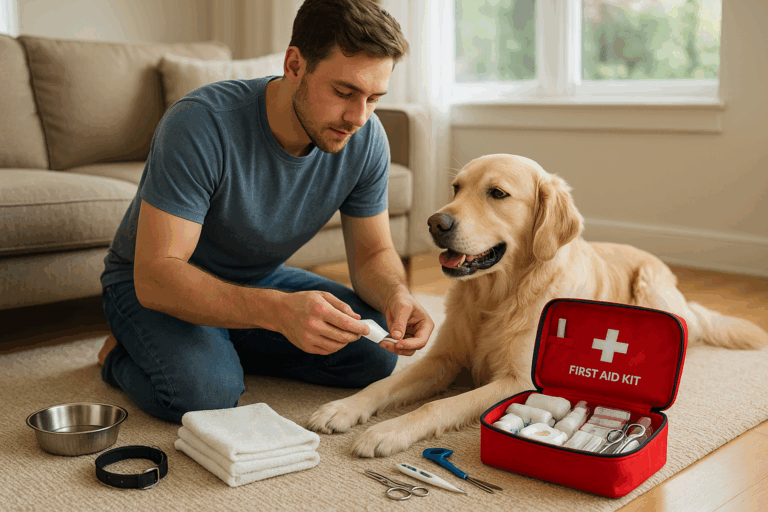🐾 Their ears perk up, tails wag, and in no time, they’re at the door, ready for an adventure. But have you ever stopped to consider the impact of these adventures on their paws? More specifically, have you ever thought about the necessity of dog booties? 🐕🦺
While it might seem like an odd accessory, dog booties serve a vital purpose in safeguarding your dog’s paws from various harmful elements during their outdoor escapades. From scorching pavement to icy sidewalks, sharp debris to irritating allergens, there’s a multitude of threats to those tiny, tender paws. It’s crucial to ensure your dog’s paw protection for their health and happiness. And that’s precisely what we’re going to dive into today – the ultimate guide to dog bootie safety for happy and healthy adventures. 🏞️
Now, you might be asking yourself, “Does my dog really need booties?” It’s a common question, and the answer often depends on the individual dog, its breed, age, health status, and the environment it’s exposed to. We’ll explore all these factors and more, offering insights into when and why dog booties might be necessary. 💡
In this comprehensive guide, we’ll start with understanding the anatomy of a dog’s paw, delving into the reasons why it might be susceptible to injury or damage. 👣 We’ll then move onto the different types of dog booties available in the market, discussing their material composition, designs, benefits, and how to choose the right one for your pooch. 🛍️
And it doesn’t stop there. Once you’ve selected the perfect booties, the next step is acclimatizing your dog to wearing them. If you’ve ever tried dressing up a dog, you know it’s not always a walk in the park (pun intended!). Training your dog to wear booties can be a challenge, but we’ve got some expert tips and tricks up our sleeves to make this transition smooth and hassle-free. 🎓
But, what if your dog absolutely refuses to wear booties, or if they’re not suitable due to some health concerns? Don’t worry; we’ve got you covered. We’ll share alternative solutions to protect your pup’s paws, ensuring they’re safe, comfortable, and ready to explore the world. 🌍
Lastly, we’ll delve into the maintenance and care of dog booties. Like any other pet accessory, these too require periodic cleaning and inspection to keep them in good shape and prolong their lifespan. We’ll guide you through the process, highlighting common issues to watch out for and how to fix them. 🧹
In essence, this guide is all about ensuring that your dog’s outdoor adventures are as safe, enjoyable, and paw-friendly as possible. We’re here to help you make informed decisions about your dog’s paw protection, and assist you in navigating the world of dog booties. So, leash up, put on those booties, and let’s head out on a safe and sound adventure with our four-legged friends! 🐶
Understanding the Need for Dog Booties: Setting the Groundwork
When we think about dog accessories, booties may not be the first item that comes to mind. Yet, these little items can play a significant role in promoting your pet’s overall health and happiness. To understand their value, it’s important to first comprehend the structural nature of a dog’s foot. Unlike humans, dogs walk on their toes, and their paw pads serve as a buffer against rough terrains and extreme temperatures. However, these pads are not indestructible. That’s where dog booties come into play.🐾
Boots can provide an extra layer of protection for your dog’s sensitive paws, ensuring that they can enjoy their outdoor adventures without the risk of injury or discomfort. This is particularly important for dogs that are exposed to harsh environments, such as hot pavements, icy roads, or rocky trails. Moreover, certain dog breeds have more sensitive paws than others, making them more susceptible to injuries. Therefore, dog booties are not just a fashion statement – they serve a critical functional role as well.
So, how do you navigate the world of dog booties to select the right ones for your furry friend? This comprehensive guide aims to provide you with all the necessary information to make an informed choice. From understanding the types of dog booties to tips on fitting and using them, we’ve got you covered.
Selecting the Right Dog Booties: Material, Design, and Size
When it comes to selecting the perfect pair of dog booties, there are several factors to consider. First and foremost is the material of the booties. This greatly depends on the kind of environment your dog will be exposed to. For instance, for hot and rough surfaces, go for booties made of durable and heat-resistant materials such as rubber or heavy-duty fabric. On the other hand, for snowy or wet conditions, booties made of waterproof material would be more appropriate.
The design of the booties is another important factor. Look for features such as adjustable straps for a secure fit, reflective strips for visibility in the dark, and soft lining for added comfort. Some booties even come with anti-slip soles to provide additional traction on slippery surfaces.
The size of the booties is equally important. A boot that’s too large may slip off, while one that’s too small could cause discomfort or restrict movement. Most manufacturers provide sizing charts to help you choose the right size. Remember, a proper fit is key to ensuring your dog’s comfort and the effectiveness of the booties.
Comparative Analysis: Top 3 Dog Booties
| Brand | Material | Design | Size Range |
|---|---|---|---|
| Ruffwear Grip Trex | Vibram rubber soles, breathable mesh upper | Adjustable straps, reflective trim | 1.5″ – 3.25″ |
| Muttluks Original All-Weather IB | Leather soles, nylon upper | Self-tightening straps, reflective strips | 1.5″ – 5.25″ |
| Pawz Water-Proof Dog Boot | Natural rubber | Disposable, reusable | 1″ – 4″ |
Helping Your Dog Adjust to Booties: Patience is Key
While dog booties offer many benefits, it’s essential to note that not all dogs will take to them immediately. For many pups, wearing booties may feel unnatural at first. Thus, patience and positive reinforcement are crucial in helping your dog adjust to their new footwear. Start by letting your dog wear the booties indoors for short periods. Gradually increase the duration and introduce outdoor walks once your dog seems comfortable.
Remember, some dogs may never fully adjust to wearing booties, and that’s okay too. It’s important to respect your dog’s comfort and preferences. There are alternatives available, such as paw waxes and balms, which can offer some degree of protection for your dog’s paws.
Wondering how to get your dog to adjust to booties? Here’s a helpful video: “How To Get Your Dog Used To Wearing Booties” by Zak George’s Dog Training Revolution. Watch it to get some practical tips and tricks.
Proper Bootie Care: Ensuring Longevity and Efficiency
Like any other pet accessory, proper care and maintenance of dog booties are crucial to ensure they last long and function effectively. Check the booties regularly for any signs of wear and tear. Keep them clean by washing them as per the manufacturer’s instructions. If the booties are not waterproof, avoid using them in wet conditions as it can damage the material and reduce their lifespan.
In case the booties get wet, make sure to dry them properly before the next use. Moisture can lead to the growth of mold and mildew, which can cause a foul smell and even lead to health issues for your pet.
In conclusion, while dog booties are an excellent tool to protect your pup’s paws, their effectiveness largely depends on your choice and how well you maintain them. So, take your time to pick the right pair and ensure proper care to provide your pet with the best possible protection.

Conclusion
In conclusion, we’ve journeyed through a comprehensive exploration of software development methodologies, a critical cornerstone in the realm of Information Technology and Engineering. This excursion has involved an extensive investigation of their vital characteristics, applications, and the comparative advantages they each hold. It has also delved into the fundamental yet complex concepts such as Agile, Scrum, Kanban, and Waterfall methodologies, each carrying its unique set of benefits and applicability.
Agile has been spotlighted for its flexibility and responsiveness to change, and it’s customer-centric approach, with its ability to produce working software in a shorter span of time. We’ve learned that Scrum, a subset of Agile, further boosts productivity with its highly iterative nature and self-organizing teams, which foster collaboration and quick decision making.
Kanban, another Agile offshoot, also gained our attention for its visualization of workflow that enables seamless tracking and managing of work items. Waterfall, with its more traditional and structured approach, was recognized for its clear project stages and easier management, particularly beneficial in projects with well-defined requirements.
Understanding these methodologies not only provides insights into the operational nuances of software development but also equips us with the knowledge to select the most suitable approach for our specific project requirements. It is our hope that this in-depth analysis has demystified the sometimes overwhelming world of software engineering, fostering a more robust understanding and application of these methodologies.
With this article, we aimed to translate complex jargon into comprehensible insights, enhancing your technical acumen and aiding in informed decision-making. The importance of understanding and applying the right software development methodology cannot be overstated—it can significantly impact the efficiency, effectiveness, and overall success of any software project.
As we wrap up this comprehensive guide, it is our hope that the information provided has been insightful and will prove instrumental in your software development endeavors. If you have any thoughts or experiences you would like to share, or if there are any topics you would like to see discussed in future articles, please feel free to comment below. 📝
If you found this article valuable, we would appreciate if you could share it with your colleagues, friends, or anyone who may benefit from this information. 🌐
Keep exploring, keep learning, and remember that in the world of software development, adaptability and continuous learning are key! 🔑
For further reading on Agile, Scrum, Kanban, and Waterfall methodologies, you can visit the following active sources:
– Atlassian’s Agile Coach
– Scrum.org: What is Scrum?
– Kanbanize: What is Kanban?
– Waterfall-Methodology.com
References:
– Agile Manifesto. (2001). Manifesto for Agile Software Development. Retrieved from https://agilemanifesto.org/
– Schwaber, K., & Sutherland, J. (2020). The Scrum Guide. Retrieved from https://www.scrumguides.org/docs/scrumguide/v2020/2020-Scrum-Guide-US.pdf
– Anderson, D. J. (2010). Kanban: Successful Evolutionary Change for Your Technology Business. Blue Hole Press.
– Royce, W. W. (1970). Managing the Development of Large Software Systems. Proceedings of IEEE WESCON, 26(August), 1–9.



